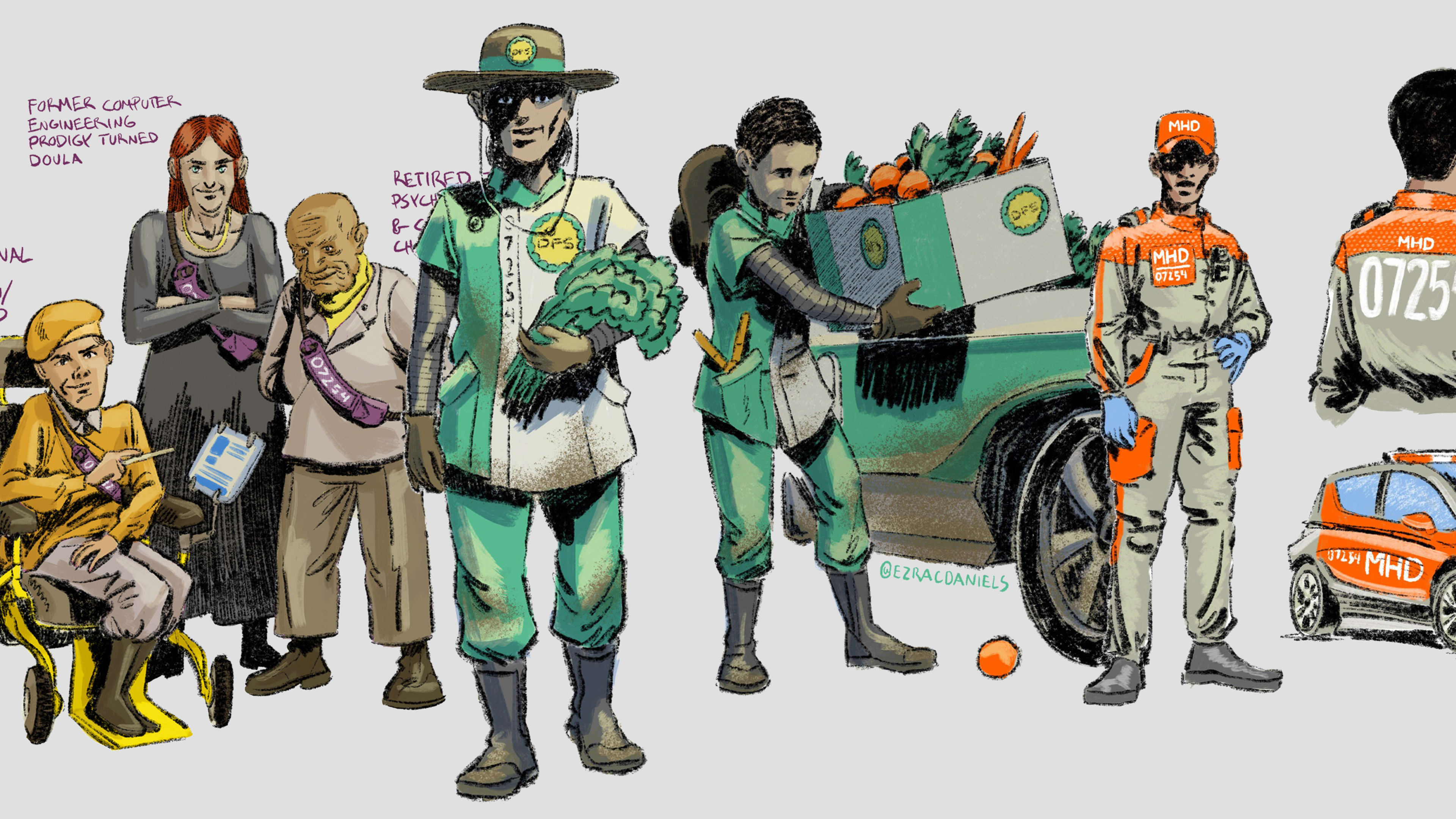When we picture the cops responding to calls, we have an archetypal image of what that looks like—even if it doesn’t turn out that way in practice. As activists push for the defunding of police and the investing of funds into other city departments that can build up communities, it can be hard to imagine how those different services will act differently. A list of alternatives to the police is easy, but getting people to picture who comes when you call for help is more complicated.
To help spark people’s imaginations, graphic novelist Ezra Claytan Daniels illustrated some examples. Inspired by posters explaining alternatives to policing that have been shared widely in the wake of George Floyd’s death and nationwide protest against police brutality, Daniels designed uniforms for new public service departments.
In his illustrations, a Mental Health Department officer is trained in de-escalation, psychiatry, and emergency medical care, and decked out in a bright orange and beige uniform with reflective ID numbers, a body camera, and medical gloves—but no gun. Department of Food Security workers wear green uniforms and work gloves, and lift boxes of produce out of a truck.
The Department of Crime Deduction doesn’t need weapons to solve cases, but instead uses critical thinking and problem-solving skills; a retired trauma psychologist, former computer engineer-turned-doula, and a professional dungeon master with a physics PhD wear purple sashes, with ID numbers and a utility pocket, across their chests. The Climate Mitigation Department wears a variation of a hazard suit to perform as a “climate disaster first responder.”
“All the stuff that I do is typically science fiction and speculative fiction,” says Daniels. His graphic novel Upgrade Soul centers around an “experimental rejuvenation procedure,” and won the 2017 Dwayne McDuffie Award for Diversity in Comics. His latest, BTTM FDRS, which he did with illustrator Ben Passmore, is set in a South Side Chicago neighborhood consumed by urban blight where characters confront monsters “both metaphorical and real.” It’s nominated for two awards and was named on multiple best books of 2019 lists.
So much science fiction, though, is a cautionary tale against evils or downright dystopian. “I was thinking about how something like Star Trek probably inspired a lot more social change than any number of Terminator or Alien films, as much as I love those things,” he says. “There’s something about utopian fiction that I’ve really been drawn to lately . . . so I’ve been thinking about trying to come up with utopian visions, and I think those posters that I saw kind of just sparked that need to visualize something.”
In a post on The Nib where he shared his illustrations, Daniels set these “new agencies that serve and protect” in Los Angeles in 2023, assuming that the city has since dismantled the LAPD and reallocated its budget. Daniels, who is mixed-race, lives in Los Angeles and has had some “harrowing” experiences with LAPD, he says.
His alternatives aren’t fully fleshed-out suggestions of what the city should do instead, and he notes that he is “supremely unqualified to come up with uniform designs or suggest any solution for making policy.” Instead, they’re a fun thought experiment that he hopes will spark some conversation and help people wrap their heads around alternatives to police. Already, other illustrators and comics have used the hashtag #publicservicedesign to share their own creations.
“For me, and a lot of people who are just being exposed to the idea of defunding police or abolishing police, it’s a really difficult thing for people to wrap their minds around, if only because we’ve all been conditioned to see police as an integral part of society,” he says. “I think it’s really difficult for people to use their imaginations to imagine what society would look like without that. Like, what do you do when people commit crimes? What do you do when there’s a serial killer on the loose? Maybe it’s easier for people to look at a drawing or a photograph and imagine what this would look like in the world.”
Recognize your brand’s excellence by applying to this year’s Brands That Matter Awards before the early-rate deadline, May 3.
